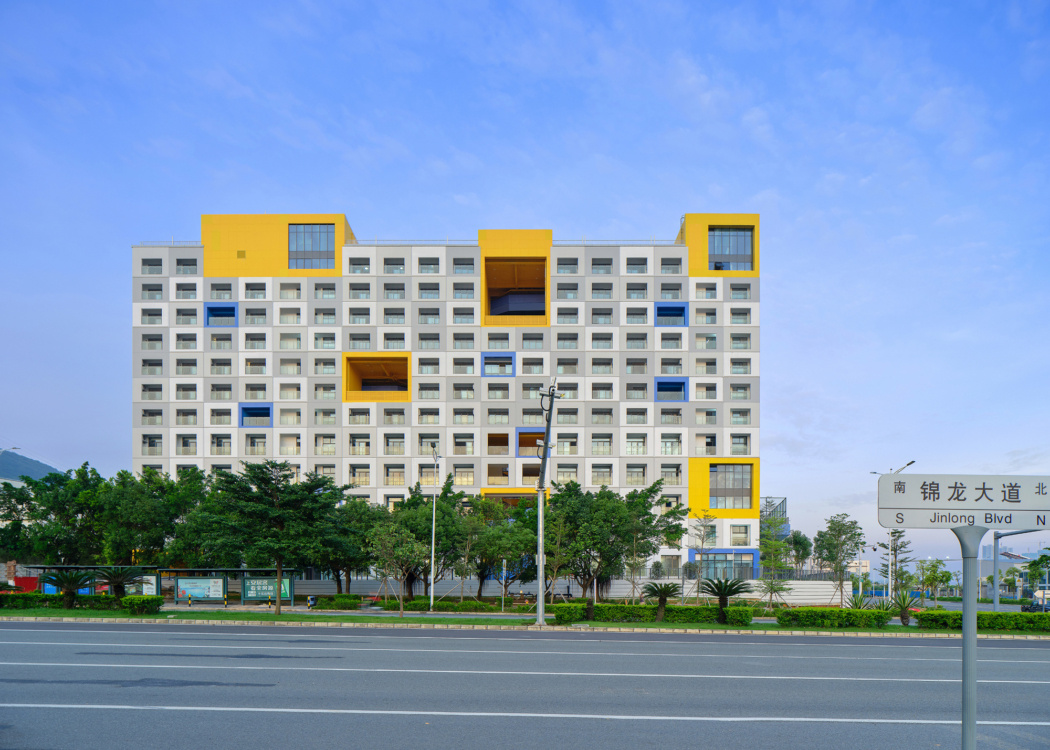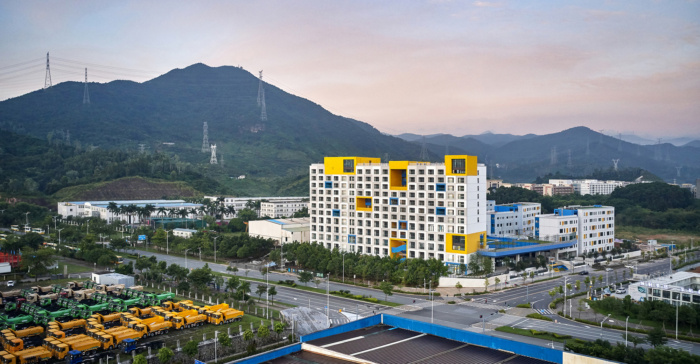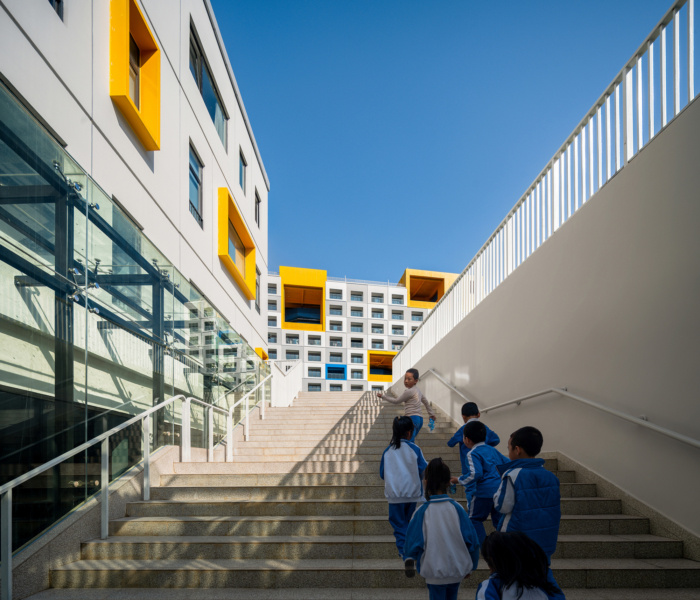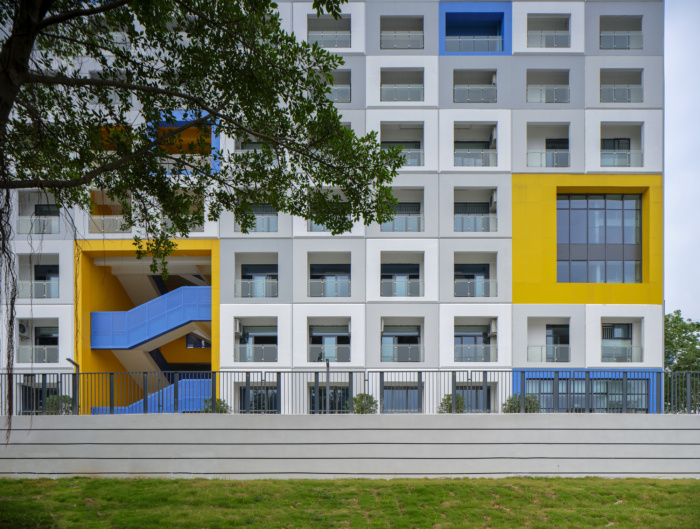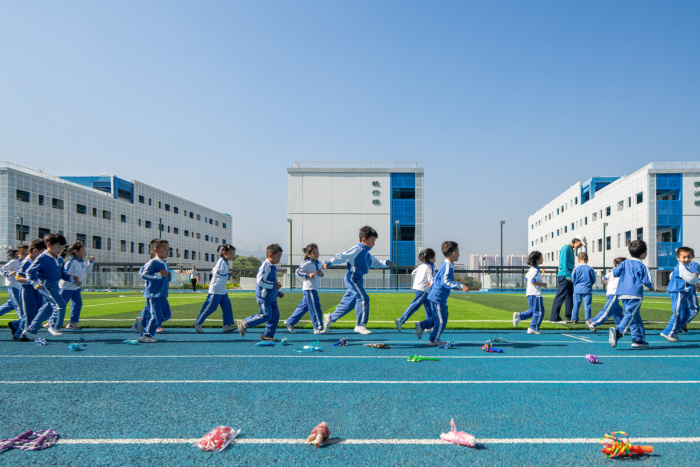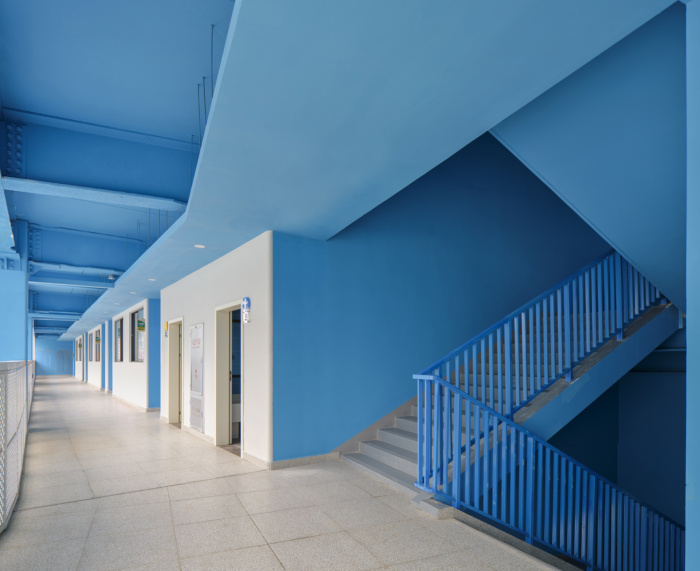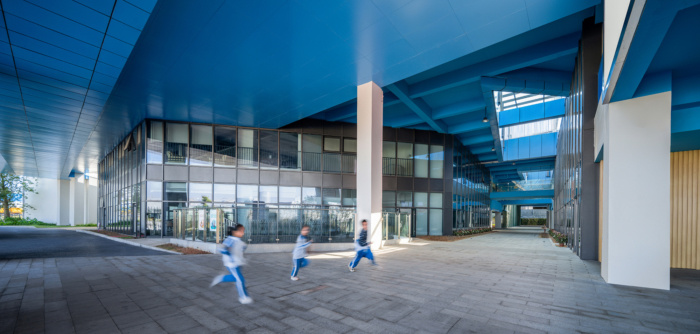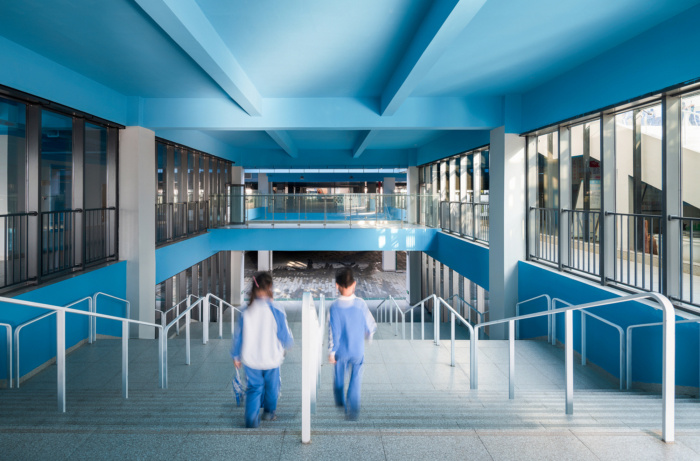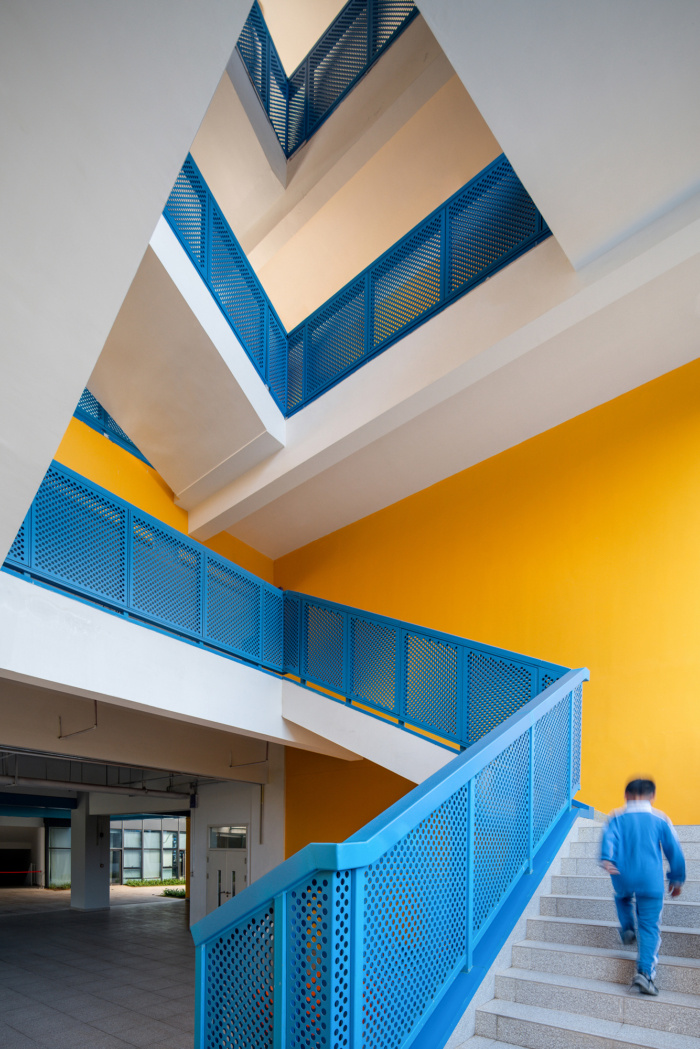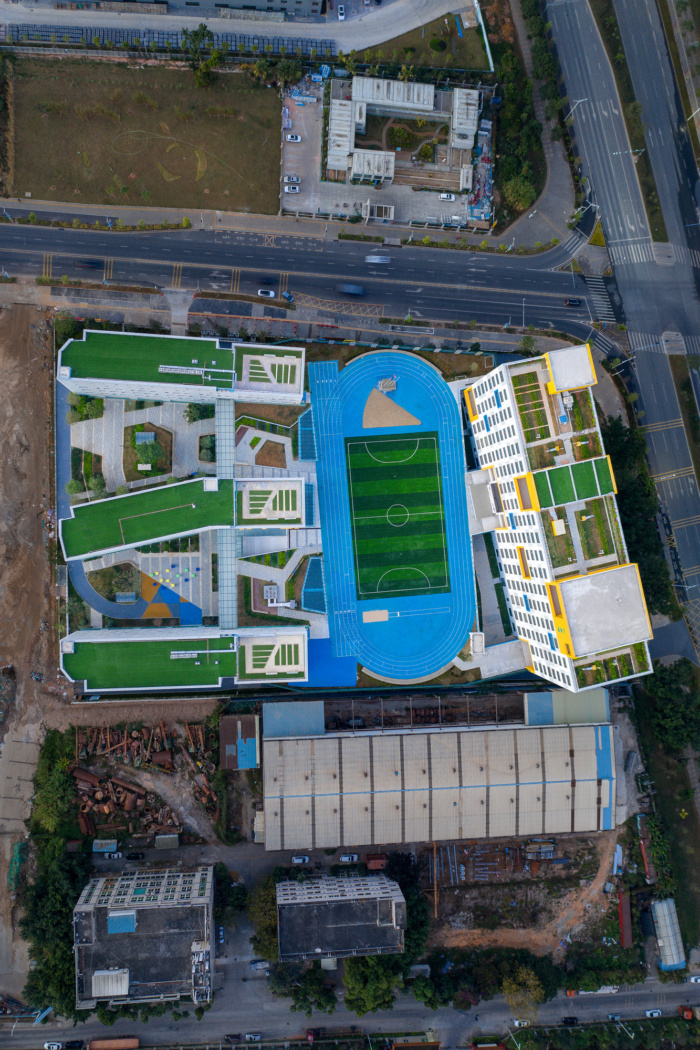Jinlong Prefab School, Shenzhen
Crossboundaries completed the Jinlong Prefab School to help meet the need for a higher demand of secondary schools in Shenzhen, China.
As one of China’s first-tier cities, Shenzhen is facing, due to its rapid population expansion, an overall public-school shortage. In 2018, the city therefore approved a development of Prefab school projects in the Pingshan District. This 36-classroom Campus, with a construction area of about 50,000m2 and a site area of only around 16,000m2, the plot ratio of the Jinlong project is more than 2, representing a quite high index for a school. It was essential to design the public spaces following practical and at the same time clever considerations, trying to avoid repetitiveness and a sense of oppression as well as to set aside space for future educational innovation.
For about 75% of the Jinlong School Project, Crossboundaries adopted a prefabricated method. This dramatically reduced on-site construction waste, required wet construction, labor input and the necessary construction period. Due to the use of a local, Shenzhen based prefab elements factory, transportation costs were kept to a minimum as well.
The architects managed to give the school a distinctive aesthetic quality, its very own individual design character, whilst also paying attention to people-oriented spatial relationships. They aimed to break the rigid repetition of the same paneling, and to incorporate visually appealing highlights across the campus.
Whereas sports fields in conventional campus layouts are usually pushed to the peripheral area, disconnected from the learning spaces, the running track of the Jinlong school was positioned in the middle of the campus and lifted up on a platform to allow for other sport areas, art, library and multifunctional spaces below, thus creating a public corridor on the lower level, that runs through the whole campus.
Corridors connecting the teaching buildings on different levels to each other and also to adjacent areas of the elevated sports fields are part of a larger scoped network, facilitating users free movement and circulation.
Incorporated in the dormitory at different heights and emphasized in yellow, are multiple large-scale public spaces. They are communication and meeting spaces for the dormitory’s residents and break the crowded and uniform feeling, the density evoked by the repetitiveness of the large number of residential units.
Considering Shenzhen’s subtropical climate, a lot of the school complex’s public areas remain open and were not closed off like the classrooms, labs or other special areas. Perforated, light metal panels were applied to the teaching buildings’ facades, providing not only functional benefits such as optimal air circulation but also visional qualities by revealing colors and movements behind.
Architect: Crossboundaries
Photography: Wu Qingshan, Yang Chaoying

